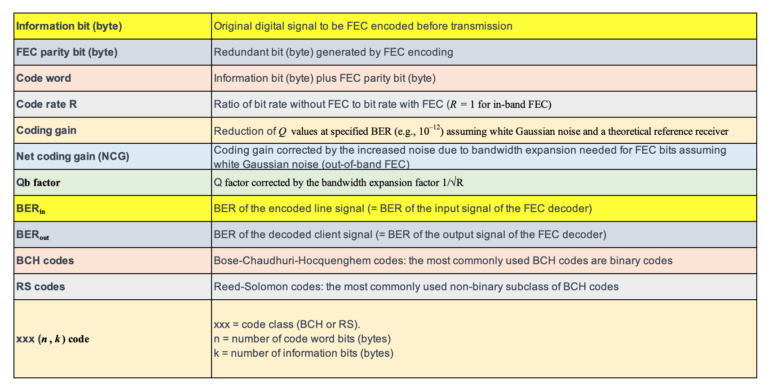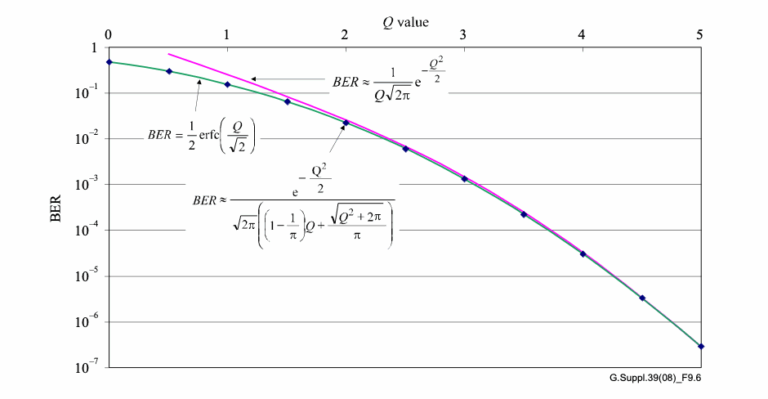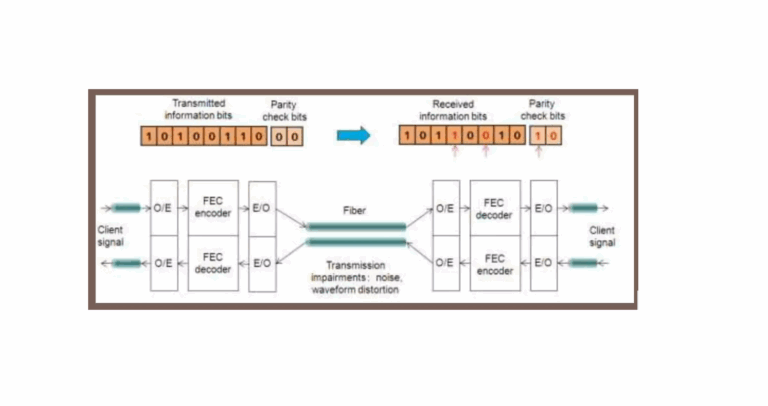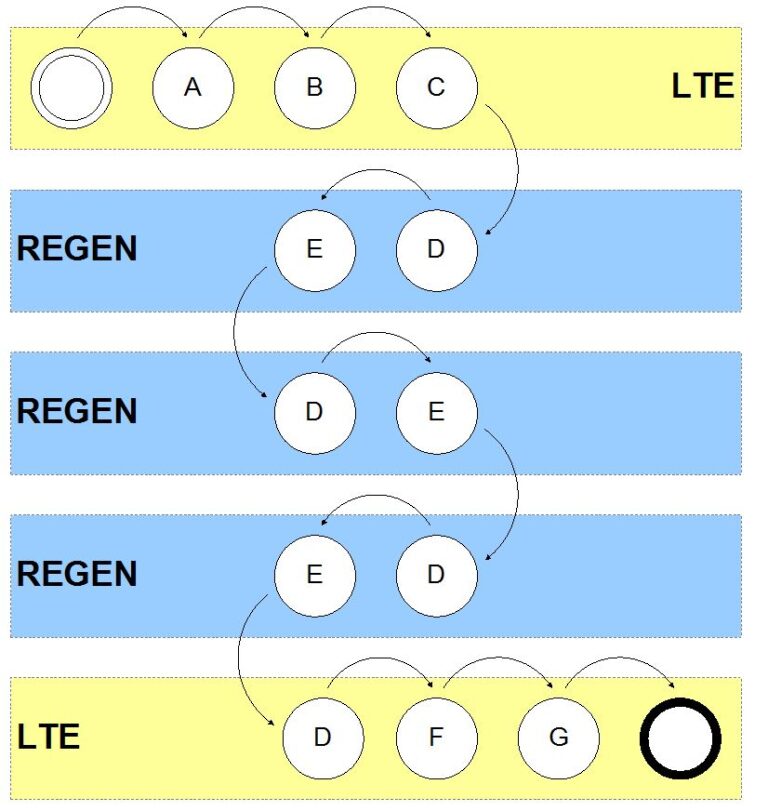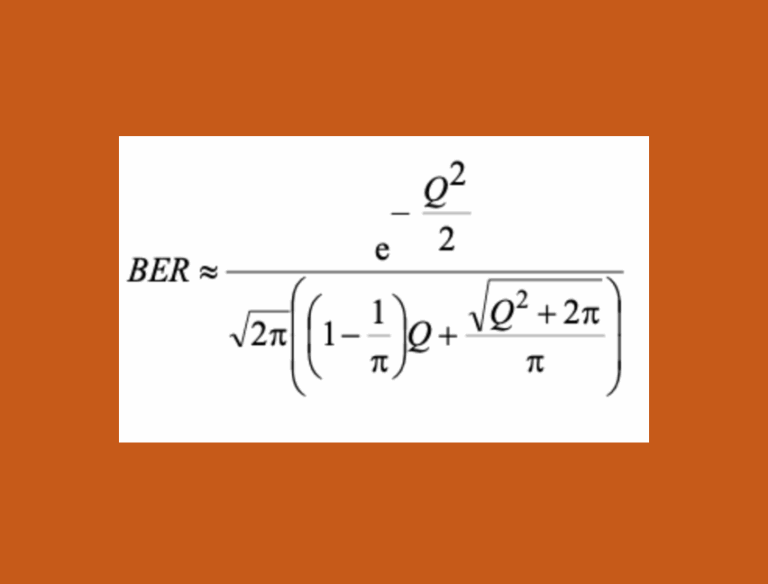HomePosts tagged “ber”
ber
Showing 1 - 10 of 10 results
In the pursuit of ever-greater data transmission capabilities, forward error correction (FEC) has emerged as a pivotal technology, not just...
-
Free
-
March 26, 2025
Forward Error Correction (FEC) has become an indispensable tool in modern optical communication, enhancing signal integrity and extending transmission distances....
-
Free
-
March 26, 2025
Signal integrity is the cornerstone of effective fiber optic communication. In this sphere, two metrics stand paramount: Bit Error Ratio...
-
Free
-
March 26, 2025
In the world of optical communication, it is crucial to have a clear understanding of Bit Error Rate (BER). This...
-
Free
-
March 26, 2025
FEC codes in optical communications are based on a class of codes know as Reed-Solomon. A Reed-Solomon code is specified as RS (n, k), which means...
-
Free
-
March 26, 2025
“In analog world the standard test message is the sine wave, followed by the two-tone signal for more rigorous tests. ...
-
Free
-
March 26, 2025
The Bit Error Ratio (BER) is often specified as a performance parameter of a transmission system, which needs to be...
-
Free
-
March 26, 2025
Bit error rate, BER is a key parameter that is used in assessing systems that transmit digital data from one...
-
Free
-
March 26, 2025
The first thing to note is that for each frame there are two sets of 20 parity bits. One set...
-
Free
-
March 26, 2025
The Bit Error Rate (BER) of a digital optical receiver indicates the probability of an incorrect bit identification. In other...
-
Free
-
March 26, 2025
Explore Articles
Filter Articles
ResetExplore Courses
Tags
automation
ber
Chromatic Dispersion
coherent optical transmission
Data transmission
DWDM
edfa
EDFAs
Erbium-Doped Fiber Amplifiers
fec
Fiber optics
Fiber optic technology
Forward Error Correction
Latency
modulation
network automation
network management
Network performance
noise figure
optical
optical amplifiers
optical automation
Optical communication
Optical fiber
Optical network
optical networking
Optical networks
Optical performance
Optical signal-to-noise ratio
Optical transmission
Optical transport network
OSNR
OTN
Q-factor
Raman Amplifier
SDH
Signal amplification
Signal integrity
Signal quality
Slider
submarine
submarine communication
submarine optical networking
Telecommunications
Ticker

